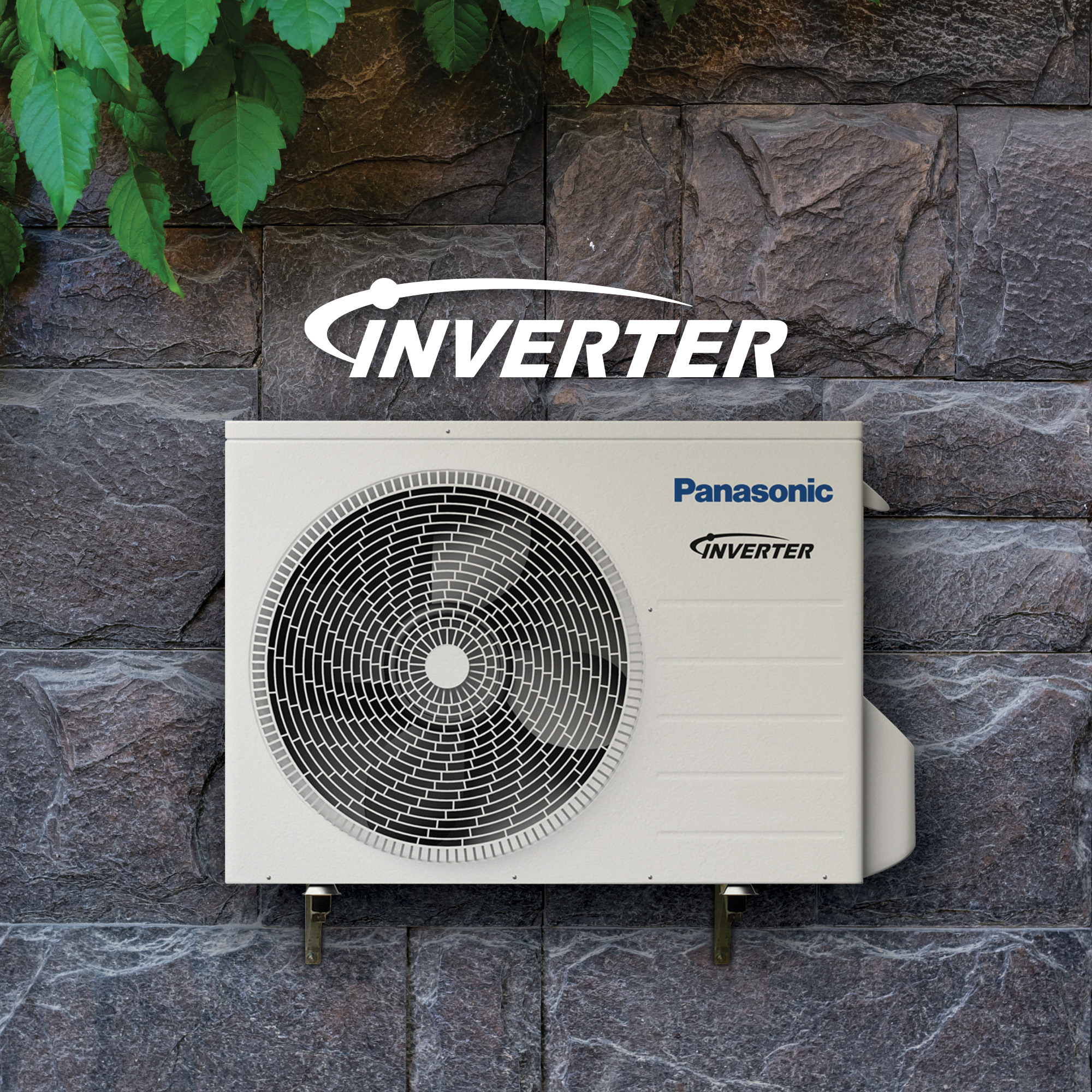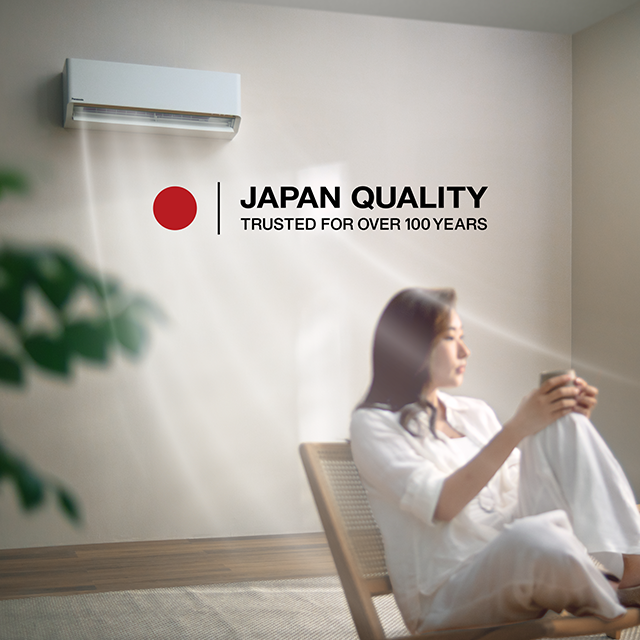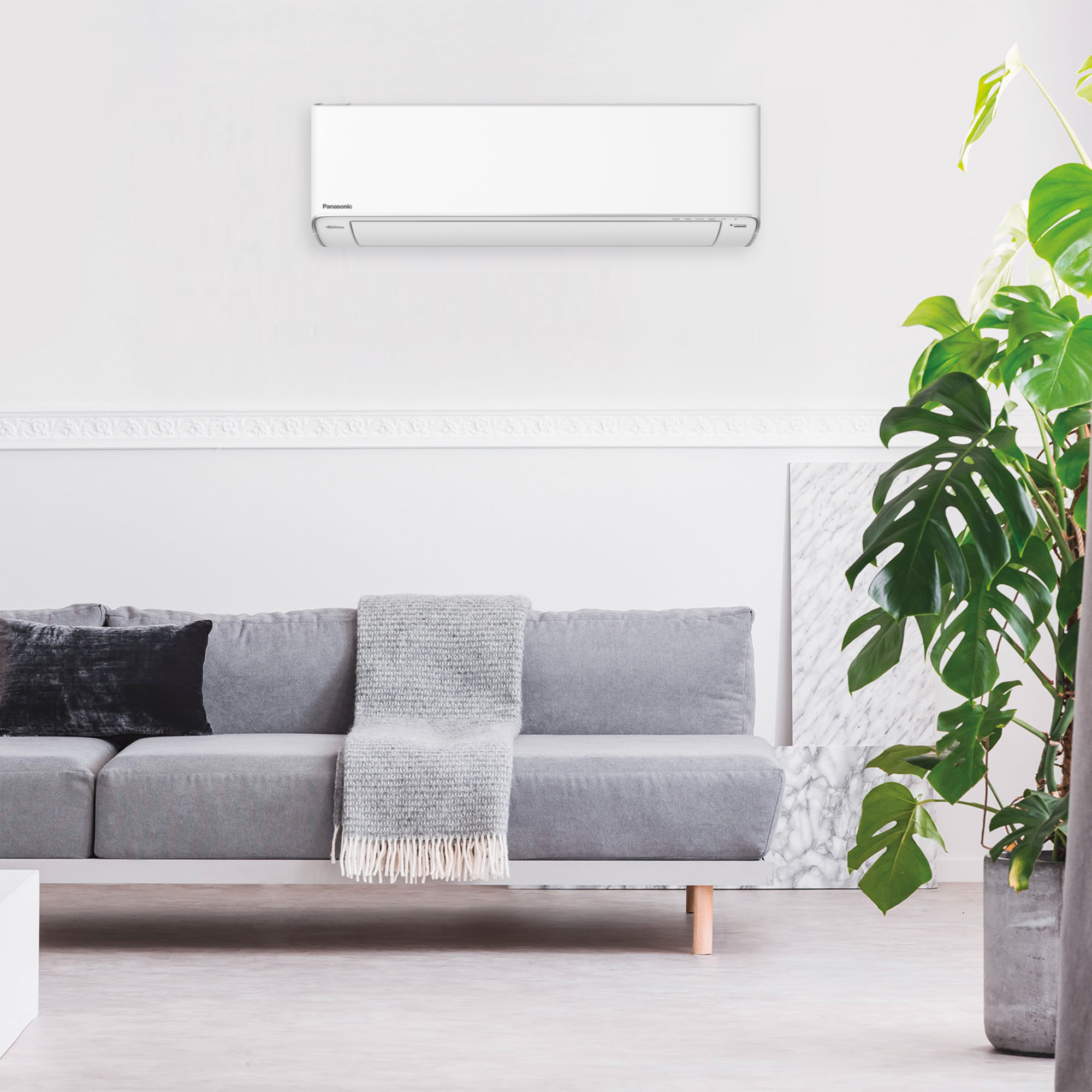

A Reliable Energy Efficiency Standard
That Does
Not Compromise on Your Comfort
Energy efficiency has become top priority for both homeowners and businesses across the globe. The cooling of spaces within a building has always been a major contributor for energy consumption. Now, with the growing dependence on air conditioning, there is an increased focus on energy efficiency of these systems.
What Is Energy Efficiency In Air Conditioning
Energy efficiency in air conditioning primarily refers to the optimal use of an air conditioning system. This refers to the cooling or heating an indoor space using the least energy possible without compromising comfort. For example, an energy-efficient air conditioner uses less energy than traditional air conditioner but provides the same level of cooling comfort.

Measuring Energy Efficiency
There are several methods of measuring an air conditioner's energy performance. This performance rating is important to help customers compare air conditioning systems and understand how air conditioner efficiency can impact their electricity bill.
Seasonal Energy Efficiency Ratio (SEER)
The Seasonal Energy Efficiency Ratio (SEER) method measures the air conditioner's efficiency over an entire year's cooling season by using constant indoor temperature and a range of possible outdoor temperatures with capacity at full load operation.
Energy Efficiency Ratio (EER)
EER, stands for Energy Efficiency Ratio, a calculation of air conditioner efficiency based on fixed constant indoor and outdoor temperature with capacity at full load operation.
Coefficient of Performance (COP)
Coefficient of performance (COP) is used to describe an air conditioning unit's heating efficiency and defined by the ratio of heat dissipation to the amount of electricity the system uses at a particular instant.
Each energy efficiency rating indicates the energy efficiency of the product evaluated under different conditions. This ratings implies when less energy used, the higher the rating thus, the more efficient the air conditioning unit is. However, in actual, efficiency of a unit in operation depends on the weather fluctuation, climate as well as condition inside your house.
Panasonic Adopts New Efficiency Rating A More
Realistic Energy Evaluating Standard
Air conditioners perform differently in different conditions. Conditions such as geographical area with varying ambient temperature could affect the operation of air conditioning systems. High temperatures in warmer areas require higher energy for an air conditioner to operate. Panasonic Air Conditioners adopt Cooling Seasonal Performance Factor (CSPF) an updated efficiency standard for more realistic energy efficiency measurement based on actual usage environment over an entire year.
What is CSPF?
CSPF stands for Cooling Seasonal Performance Factor. CSPF ratings measure annual energy consumption and efficiency. It takes into account different seasonal periods and temperature fluctuations at different cooling loads. These include situations where the unit is on standby or operating at partial load, such as when inverter technology is involved. This results in a more accurate and realistic indication of energy efficiency over an entire cooling season. A higher CSPF rating reflects a more energy efficient air conditioning unit.

CSPF Calculation Method
CSPF is calculated based on the ratio of the total amount of heat that a unit can remove from the indoor air (in watts) when operated for cooling during the cooling season versus the total amount of energy consumed during the same period (in watts).

Cooling Seasonal Total Load (CSTL)
Total amount of heat that is removed from the indoor air when equipment is operated for cooling the building during the cooling season.
Cooling Seasonal Energy Consumption (CSEC)
Total amount of energy consumed by the equipment when it is operated for cooling during the cooling season.
How is CSPF different from other Energy
Efficiency Rating Method?
In comparison with nominal energy efficiency, CSPF evaluate air conditioning energy performance in variable temperature and operating conditions. The table below demonstrates the difference between CSPF and other energy efficiency rating methods.
|
Rating |
Cooling Seasonal Performance Factor (CSPF) |
Seasonal Energy Efficiency Ratio (SEER) |
Energy Efficiency Ratio (EER) |
Coefficient of Performance (COP) |
|---|---|---|---|---|
|
Equation |
Total Cooling Load (W) ÷ Total Energy |
Total Cooling Capacity (Btu) ÷ |
Cooling Capacity (Btu) ÷ |
Heating Capacity (W) ÷ Input Power (W) |
|
Capacity Load |
Variable load capacity includes partial load such as uses of Inverter technology |
Full load capacity |
Full load capacity |
Variable load capacity |
|
Time Factor |
Annual cooling periods |
Annual cooling periods |
Defined cooling periods |
Instantaneous |
|
Temperature |
Range of indoor and outdoor ambient temperature, reflects real time environment. |
Fixed constant indoor temperature with range of outside temperature |
Fixed constant indoor and outside temperature |
Instantaneous |
Benefits of CSPF Implementation
The adoption of CSPF ratings will greatly benefit homeowners and businesses. Its realistic evaluation of 'efficiency' will be useful to homeowners when it comes to selecting the most energy efficient air conditioner model. This alone helps in lower energy bills and reduce environmental impact.

A More Realistic Measure of Energy Efficiency
CSPF metrics mimic the natural environment to calculate energy efficiency to represent air conditioner efficiency better than conventional methods. CSPF evaluation include factors such as inverter technology, which is not captured in conventional methods.

Easy To Identify Energy Savings Value
An accurate energy efficiency indicator helps you make better purchasing decisions. CSPF ratings show you how much energy an air conditioner would consume under typical running conditions, so you can decide which model suits your budget the most.

Reduce Electricity Bills
An energy efficient air conditioner uses less energy, meaning lower energy bills. The higher the CSPF ratings, the more energy efficient the air conditioner is, resulting in significant savings in the long run.

Reduce Environmental Impact
High energy consumption contributes to global warming due to greenhouse gas emissions. When you use an air conditioner with high CSPF rating, you reduce the amount of emissions released to cool your space.
Improved Energy Efficiency, Without
Compromising Comfort
Understanding efficiency ratings makes it easier to compare models and find one that will lower your energy consumption the most. To enjoy greatest efficiency, look for an air conditioning unit with higher ratings.
Panasonic is committed in bringing you more energy-efficient air conditioning models with advanced technology and improving on our efficiency ratings without compromising your comfort. You can be assured of better quality and energy-efficient air conditioning units to provide you optimal comfort at lower energy consumption.











